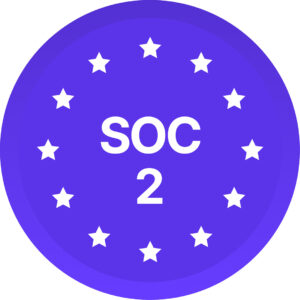According to the Government of Canada, the first Indigenous Veterans Day was observed in Manitoba in 1994. Currently, it has spread across the country to other provinces and territories and is recognized annually on November 8. Understanding, recognizing, remembering, and celebrating the brave contributions of Indigenous Canadians serving in the Canadian military is of the greatest importance. Historically, these contributions have been ignored, erased from our past and overlooked at Remembrance Day celebrations. Enlistment into the Canadian armed forces has always been voluntary and Indigenous Canadians have always answered the call to serve. Although the exact statistics are hard to determine, the rate of participation in Canada’s military has been impressive. During the First World War (1914-1918), more than 4,000 served in uniform during this conflict from First Nations, Métis and Inuit communities. Joseph (2021) states that voluntary enlistment was high in Indigenous communities, but more specifically higher in communities that had more community resources. However, due to the poverty, and diseases on reserves, hundreds and perhaps thousands were unable to pass medical examinations.
When it comes to the First World War, I can’t help but think of Frederick Ogilvie Loft (F.O. Loft). F.O. Loft was a Mohawk chief, activist, reporter, author, lumberman, and war veteran who was born in 1861 on the Six Nations Reserve of Grand River. His Mohawk name Onondeyoh translates to “Beautiful Mountain” and is recognized as one of the most important activists of the 20th century (Gallant, 2020). There were several reasons many young Indigenous people joined the Canadian military to experience the fight against oppression overseas, but upon returning to the reality in Canada, many encountered their own oppression at home. Former Indigenous soldiers were treated unfairly by the Department of Indigenous Affairs by receiving fewer benefits, and smaller or pensions like my Grandfather Fred Morin. Indigenous lands were expropriated and provided to returning non-Indigenous veterans, and some lost their status due to enfranchisement clauses under the Indian Act or fell subject in their communities to the draconian apartheid rule of Indian Act policy.
Loft realized that there needed to be a pan-Indigenous organization that would advocate for Indigenous rights, amplify Indigenous voices, and champion important changes required in the treatment of returning Indigenous war veterans (Gallant, 2020). In December of 1918, Loft founded the League of Indians of Canada and held various meetings across the country from 1919-1922. Under the Indian Act at this time, it was illegal for Indigenous people to meet or gather politically, so Loft had to self fund the organization and hold meetings in secret. The League requested meetings with the Federal Government but was refused and viewed as a “dangerous radical” movement by the Deputy Superintendent of the Department of Indian Affairs, Duncan Campbell Scott (Gallant, 2020). Scott would often send correspondence to Indian Agents to disrupt the meetings, block access of the League to reserve communities and hinder their ability to communicate. Loft’s commitment and bravery for activism is now regarded as the catalyst for nationwide Indigenous political organizations, such as the National Indian Brotherhood founded in 1968 and its successor, the Assembly of First Nations founded in 1982 (Gallant, 2020).
Indigenous people once again answered the call to enlist in the Canadian military when the Second World War erupted in September 1939. Joseph (2021) mentions that at the end of the Second World War, Indian Affairs reported that 3,090 status Indians had participated in the war, which was 2.4% of the 125,946 status Indians identified in the Canadian census. This figure is higher as it did not account for the vast inclusion of non-status Indians, Métis or Inuit individuals enlisted. Indigenous people again enlisted when the Korean War began in 1950, and continued to contribute to the Canadian military outside of enlisting by raising war funds. Joseph (2021) mentions that despite the many decades of poverty brought about by life on the reserve and restrictive government policies and the additional hardships induced by the absence of able-bodied men who had left to join the armies; Indigenous communities raised approximately 44,000 in donations during the First World War and over 23,500 was raised and donated during the Second World War. According to the Report of the Royal Commission on Aboriginal Peoples (1996), this was done by:
“…holding dances, sales, exhibitions and rodeos; they collected scrap tires and iron. One of the most outstanding examples of Indian generosity came from Old Crow, Yukon. Old Crow Chief Moses walked from his home into Alaska, carrying the community’s winter furs. After selling them, he walked back to the nearest RCMP post and handed over some $400 to be donated to orphan children of London, England. The BBC and the government of Canada made much of this incident, sponsoring a broadcast by Indian soldiers in Britain. Before long, Old Crow had raised more money, this time for the Russian Relief Fund. Not content to rest on their laurels, the same band next contributed $330 to the relief of Chinese victims of war“ (p. 537).
There are many examples of this type of generosity, but it is also important to note the great contributions that Indigenous women made to the war efforts. Indigenous women on reserves were contributing to charitable donations in their communities and maintaining the community in the absence of the young men. Furthermore, young women, especially those with education were volunteering to serve in the armed forces. By the end of the war, many Métis women and at least 72 status First Nations women had been in uniform. Among the many women were for example, Ojibwa woman, Joan Marin of Nipigon region, Ontario, a Métis woman, Marguerite St. Germain, of the Peace River region, Alberta and a Mi’kmaq woman, Margaret Pictou, of Eel River, New Brunswick (RCAP, 1996). Indigenous women with enough education “found the armed forces an opportunity for personal growth, while others with less education could still work in wartime industries” (RCAP, 1996 p. 537).
In the post war period, Indigenous men and women have continued to proudly serve in uniform and have pursued a life in the military. Indigenous men and women have been deployed wherever they are needed, from NATO duties in Europe during the Cold War to service with the United Nations and other multinational peace operations in dozens of countries around the world. As well, many Indigenous Canadians have active duty in more hazardous and difficult countries where conflict has arisen (Gaffen, 2023).
As a Métis/Cree person from Saskatchewan with family ties to the communities of Green Lake, Meadow Lake and Flying Dust First Nation, I have recognized the contributions of generations of family members that have served in the Canadian Armed Forces. My Grandfather, Fred Morin from Meadow Lake served for the Canadian Military, I am writing this blog as I look at a picture of him. My Grandfather registered as a Canadian Army regular in Regina, Saskatchewan on May 18 in 1951, his service number was SL-4294 and he served in the Korean War and spent time in Continental Europe during peace time but sustained an injury during his time in the military. My Grandfather was never provided his military pension and he passed away in 1993 and our family has still never received anything. I often think of my Grandfather and wish I had more time with him to ask him so many more questions, but I learned a lot about him from my Grandma, my Mom and my aunties.
It is important to remember that it was not until 1995, fifty years after the Second World War, that Indigenous peoples were allowed to lay wreaths at the National War Memorial (Joseph, 2021). On November 8th, it is an important moment that we recognize, acknowledge, reflect and educate ourselves about the contributions, bravery and commitment that First Nations, Métis and Inuit veterans have provided to the Canadian military. As well, on November 11th when we reflect on Remembrance Day hold space to remember all our veterans regardless of background and culture who served during Wartime and continue to serve the Canadian armed forces presently.
References
- Gaffen, Fred. (mod 2023). Indigenous Veterans. Veterans Affairs Canada. Retrieved Oct 2023. Indigenous Veterans – Veterans Affairs Canada
- Gallant, David. (2020). Fred Loft. Retrieved Oct 2023. Fred Loft | The Canadian Encyclopedia
- Joseph, Bob. (2021). 14 Facts you may not Know about Contributions of Indigenous veterans. Indigenous Corporate Training Inc. Retrieved Oct 2023. 14 Facts You May Not Know About Contributions of Indigenous Veterans (ictinc.ca)
- Royal Commission on Aboriginal Peoples Report. (1996). Veterans. Volume 1 (p 523-564).
This blog by Roy Pogorzelski was originally published by Diversio EDU (formerly CCDI Consulting) in November 2023.
Our newsletter and blogs feature personal opinions and diverse viewpoints. We aim to create a safe space for our team to share their perspectives on diversity and inclusion. Please note that individual articles may not align with every reader’s view or comprehensively cover a topic. We appreciate the diversity of opinions and respect our team’s contributions.

